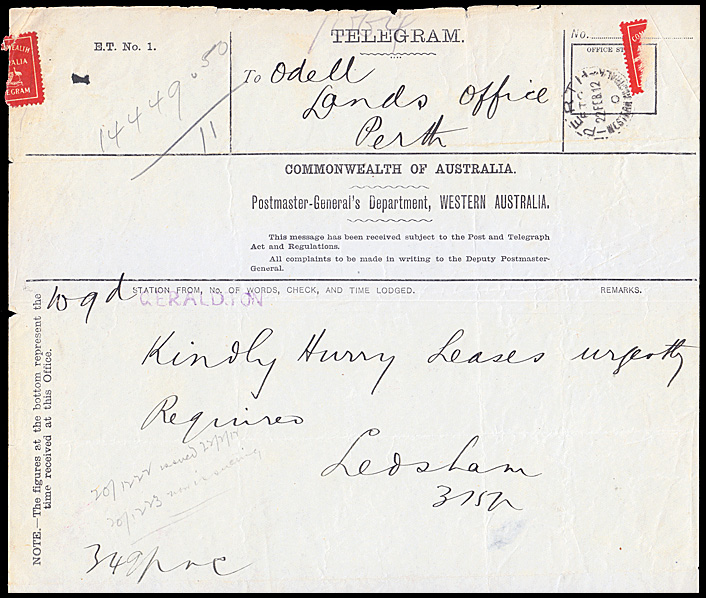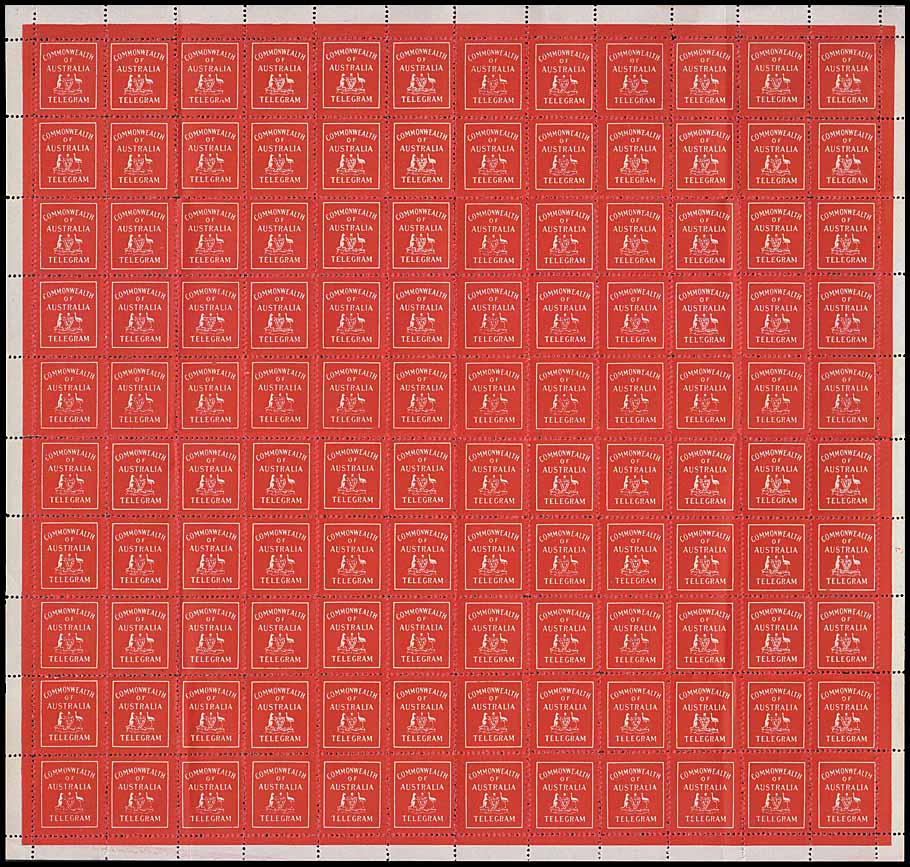Delivery form: WI-DO-4.
- Home, index, site details
- Australia 1901-1988
- New South Wales
- Queensland
- South Australia
- Tasmania
- Victoria
- Western Australia
- International
- Special aspects
| Heading and notes: | Form number E. T. 1. Standard Interim period heading. |
| Message area: | Blank. |
| Reverse side: | Blank. |
| Colours (text & form): | Blue on cream. |
| Size of form overall: | 210 × 233 mm. |
| Size of datestamp box: | 24 × 29 mm. |
- has address in box at top below TELEGRAM;
- normal Interim heading is about one third down the form;
- large blank message area.
- a scan of the only known sheet of the Telegram seals is shown below while a block of 6 is shown in conjunction with the corresponding Victorian form.
In 1912, a prototype form and envelope was trialled in at least two Chief Telegraph Offices. The only recorded example for Western Australia is shown below while the only recorded example for Victoria (VI-DO-4) is included elsewhere. The forms, after folding, were sealed with a specially printed C of A Telegraph stamp (or seal) which would be torn in two on opening. The concept was later developed further into the first delivery form issued by the Commonwealth without State references for both ordinary rate (AE-DO-1) and urgent rate (AE-DU-1) delivery forms.
 |
WI-DO-4. Geraldton to Perth (Rare PERTH E.T.O. date stamp of 22 February 1912). Also has a unboxed GERALDTON hand stamp. Experimental format. Characteristics:
This particular form was long regarded as being the only genuinely used example of this format known for any State. Another form has since been identified for Victoria (see VI-DO-4). Provenance: Gundersen. |
 The only recorded sheet of the Telegram seals known to be still in existence. Tasmanian Stamp Auctions April 2015. |
A block of 6 seals is shown in conjunction with the corresponding Victorian form (VI-DO-4).
Details of use and rarity.
| Form sub-number |
Schedule number | Earliest recorded date | Rarity rating |
| DO-4 | None | 22 February 1912 at Perth. | RRRR |